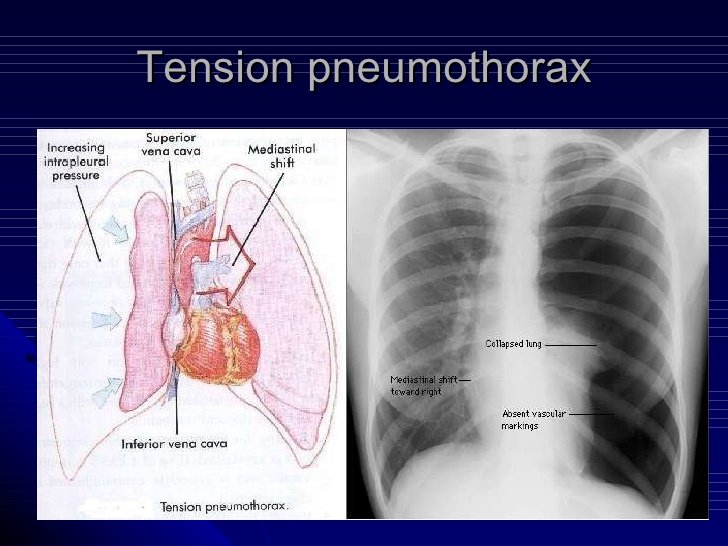Gronk takes the hardest hit of his career. (and he MIGHT have punctured his lung)
Earl Thomas, Kam Chancellor, Rob Gronkowski
(photo credit to Patriots.com) Let me tell you, being a doctor is WAY easier than trying to decode the Patriots' injury reporting. New England beat writers and reporters deserve some serious kudos for attempting to make sense of the madness. I started this Pats injury blog a month and a half ago, just in time for the team to go from Edelman appearing to be the best option at quarterback due to injuries to the Pats being one of the healthiest teams in the NFL. New England has been so healthy, in fact, that I was recently forced to research the history of Astroturf just to have something to write about. As a fan it has been awesome. As a wannabe blogger it's been a bit of a challenge. So you can imagine, at 7pm last night, when Ian Rapoport of ESPN tweetedhttps://twitter.com/RapSheet/status/798309553314086914I was morbidly energized to have an actual injury to write about. Sent the kids to bed early and got work. Two coffees, one carpal tunnel syndrome, and 4 hours later - this.https://twitter.com/AdamSchefter/status/798374962964860928So.....Rob Gronkowski either has a punctured lung OR a sore chest. Awesome. Below I will attempt to write about the scenario where Rob Gronkowski, star tight end for the New England Patriots, does indeed have a punctured lung. Please feel free to enjoy the comedy that reporting about a possible injury provides.Rob Gronkowski took a big hit from Seattle CB Earl Thomas Sunday night late in the second quarter of the Pats-Seahawks matchup. The hit came on a first-and-10 play with 4:17 left in the second quarter and resulted in an incomplete pass. Gronk stayed on his knees for no more than two seconds before hopping up. He was swiftly met by medical staff and taken to the bench for concussion screening. Minutes later, a member of the group huddled around Gronkowski gave a thumbs up to the crowd and Gronk returned to the field. After the hit, the tight end played the remainder of the game, targeted 5 times with 1 catch.https://twitter.com/uSTADIUM/status/797995195610632193During the postgame, Gronk took the podium and addressed the play, “Yeah, that was a big hit for sure; probably one of the hardest I’ve got hit in my career for sure,” Gronkowski said. “[It was] by a good player; a good fast player who’s like a missile. It was a good, clean hit; nothing against it. I just took it and it just knocked the wind out of me a little bit, that’s all. If you’ve ever gotten the wind knocked out of you, you know what that feels like. Just down for about a minute or two, it’s a little tough to breath, but once it comes back, you’re good.” If earlier reports are correct, then that means that Gronk played an entire half of an NFL football game with a punctured lung.A punctured lung is also called a pneumothorax. The word "pneumothorax" means air (pneumo) in the chest (thorax). There are multiple possible causes for a pneumothorax including penetrating chest wounds and blunt trauma, and sometimes pneumothoraces can occur spontaneously, particularly in patients with certain underlying lung disease. In the NFL, the two most common causes of pneumothorax are blunt trauma and rib fracture (where the fractured bone punctures the lung). In Gronk's case, there has been no mention of rib fractures, therefore if he has a pneumothorax I suspect that his was due strictly to blunt trauma.A punctured lung sounds pretty awful. It certainly can be. In some cases a pneumothorax can be life-threatening. In Gronk's case, however, it seems to be less of an emergency (especially if he doesn't have a pneumothorax). So, what exactly happens when a lung is punctured? I searched the internet to find a good diagram of a lung, but came up empty-handed so I ended up drawing one. I'm far from an artist, but here is a VERY basic rendering of lung anatomy:The lungs are air-filled organs in the chest which allow the body to absorb critical oxygen from the air into the bloodstream on inhalation and help the body get rid of carbon dioxide gas on exhalation. Air enters the lungs through the mouth and nose and travels down the trachea (the ringed tube seen under the word "AIR" in the diagram above) into the lungs. The air makes its way through a series of incrementally smaller tubes to millions of tiny air-filled sacs called "alveoli." These are the popcorn-shaped structures in the diagram. Air travels to the alveoli on inhalation and returns back out through the nose and mouth during exhalation. The lungs are covered by two layers of membrane, called the pleura. In the diagram, the layers of membrane are in black and orange. Typically there is almost no space between these 2 layers, as you can see in lung labelled "left lung" on the diagram. However, if one were to get hit directly in the chest by 200+ lbs of Earl Thomas shooting across the field at missile speed, the force on the chest wall can actually POP the alveoli (as seen at the top of the "right lung" in the above diagram). When this occurs, air from the lungs is allowed to rush into the space between the black and orange pleural membranes. Eventually the alveoli constrict down, the leak is sealed off, and the lung is left with a collection of air that cannot escape (this trapped air is in blue on the lung labelled "right lung"). This puts pressure on the nearby lung and makes it more difficult for the organ to absorb oxygen and get rid of carbon dioxide.(image courtesy of slideshare.com)If the pneumothorax is large it can put enough pressure on the lung to collapse it, rendering it unable to do its job. This is called a tension pneumothorax and it is a life-threatening injury. In the above drawing, the lung on the left has been collapsed by pressure from the air in a large pneumothorax. In the x-ray to the right, however, the lung on the right side is collapsed. Doctors can tell that it is collapsed on x-ray because it looks very black compared to the lung on the left. Gronk felt short of breath immediately after he was hit, but he was able to finish the game. I suspect that his (potential) pneumothorax is not large, maybe closer to the size of the pneumothorax (in blue) in my drawing. His body is very good at maximizing his lung's ability to absorb oxygen which explains how an athlete can continue to play with very few symptoms despite a punctured lung. If you watch Gronk's post-game conference you will notice that he coughed a bit while at the podium. Coughing, shortness of breath, and chest pain can all be symptoms of a pneumothorax.A pneumothorax is treated according to it's severity. A tension pneumothorax, where the athlete's ability to breathe is compromised, is treated with immediate evacuation of the air. That means, we stick a huge needle in your chest and listen to the "whoosh" of the air as it escapes from your body and you suddenly become much less dead. This is one of the more bad-ass things doctors do. If the pneumothorax is not deemed to be life-threatening, however, we do a much more boring thing. We watch it. The body is amazingly good at getting rid of stuff that doesn't belong. Over a period of days to weeks, depending on the size of the pneumothorax, the body can reabsorb the air that is trapped. We follow the size of the collection of air with x-rays every few days. Once the air is completely reabsorbed the athlete can carefully return to sports with close monitoring for symptoms. The reason that we do not want athletes to return too quickly is that the pneumothorax can actually grow in size with stress on the lungs.So, when will #87 be able to play (if he has a punctured lung.....how is it possible that I'm even writing this?)? I suspect it will be at least a week. If there is a pneumothorax, it would have to be big enough to be seen on x-ray and small enough to allow him to finish out the game. In this case, I think it would take at least a week to be reabsorbed. However, even if the (possible) pneumothorax is resolved by the weekend, I would not anticipate Gronk would make the trip to San Francisco to play the 49ers. Air travel is not recommended in the early stages of a pneumothorax.***WARNING: What you are about to read may trigger a strong emotional response***The reason that you cannot fly when you are recovering from a pneumothorax is explained by the gas laws...because why not talk some more about PSI? During take-off, as the plane ascends, the pressure in the cabin decreases. Although flight cabins are pressurized to maintain near-normal pressures, most commercial flights are pressurized to 8,000-9,000 feet, not to sea level. As the pressure drops, the air trapped in the pneumothorax starts to expand. This can increase the pressure that the pneumothorax exerts on the lungs and can cause worsening symptoms of shortness of breath, etc. Although there are no clear guidelines on when flying is okay, it is generally accepted that people with unresolved pneumothoraces should not fly. Therefore, if Gronk does in fact have a pneumothorax, I think that it is highly unlikely that he will fly across the country in 5 days. If he does have a pneumothorax I suspect we won't see Gronk until the Patriots meet the Jets (at 4:25pm, YES!) in 2 weeks. Just to complicate things further, if Gronk has a pneumothorax AND an unreported rib fracture, that time period could be extended depending on his level of pain.The other possibility is that Gronk doesn't have a busted lung OR a busted rib. In that case, you now know more than you ever wanted to know about punctured lungs and should use that information to your advantage in any situation where a coworker, friend, or date questions your medical knowledge. Please do me a favor, though - don't try to stick a huge needle in anyone's chest, even if you think they have a pneumothorax. It's probably just a cough.
Follow me on Twitter





